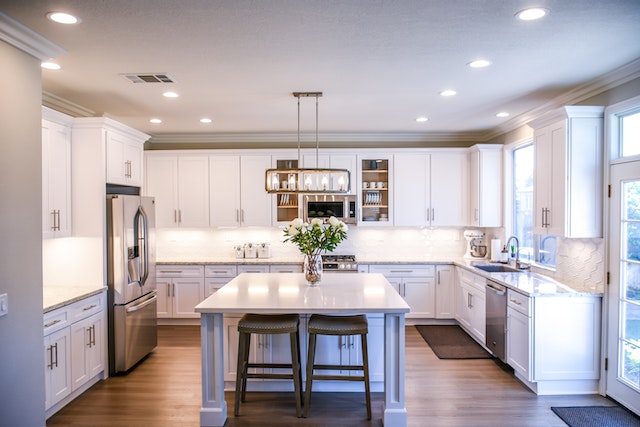Have you noticed how homeowners across California seem torn between making upgrades and watching every dollar as costs for materials, labor, and utilities keep climbing? It’s hard to keep a home nice and comfortable when bills are going up and money is limited. In this blog, we will share how to prioritize home improvements so you can make smart upgrades without draining your savings or overextending.
Start With What Impacts Comfort and Costs
Before thinking about cosmetic upgrades, it’s essential to focus on the systems and changes that directly influence your comfort and your ongoing expenses. Utility bills have risen steadily in recent years, and small inefficiencies add up fast. When deciding which improvements to tackle first, target the ones that will either reduce costs long term or prevent expensive emergency repairs down the road.
Energy efficiency upgrades should top the list, particularly for homes that have aged or haven’t been updated in a decade or more. Improving airflow and cooling, for example, not only enhances comfort but also cuts energy waste. Many homeowners have found that scheduling whole house fan installation in Riverside, CA can make a notable difference by pulling cooler air inside during mild hours and reducing the strain on air conditioning units. These systems often lead to noticeable reductions in monthly energy bills while keeping indoor temperatures more stable, a combination that makes them a worthwhile priority compared to purely cosmetic projects.
When foundational systems like cooling, heating, and insulation work efficiently, the entire home becomes easier and cheaper to maintain. With these essentials covered, it’s far more satisfying to invest in surface-level updates, knowing they won’t be overshadowed by high utility costs or recurring maintenance headaches.
Consider Resale Value Alongside Personal Comfort
Every improvement should be weighed not only by how much it benefits your day-to-day life but also by whether it adds to your property’s value. Balancing personal enjoyment with future resale potential prevents money from being sunk into features that don’t hold up financially. This is especially important as housing markets fluctuate and buyers grow more selective about where they put their money.
Kitchen and bathroom upgrades are worth the most because buyers look at them very carefully. Even modest updates in these areas—like swapping outdated faucets for modern fixtures, adding energy-efficient lighting, or replacing worn countertops—can significantly boost a home’s appeal without requiring a full remodel. Exterior upgrades also hold value, with curb appeal improvements like landscaping or modernized entryways helping a property stand out in competitive markets.
It’s easy to get carried away with highly personalized projects, but those often recoup less value when it comes time to sell. Homeowners who keep resale in mind tend to focus on versatile, broadly appealing updates that serve both immediate needs and long-term financial goals, ensuring every dollar works harder.
Tackle One Area at a Time
Trying to update an entire house all at once almost always leads to stress, delays, and overspending. Spreading projects out allows for careful budgeting, better decision-making, and more time to research options before committing. It also reduces the disruption to daily life, which can make the process feel far more manageable.
A practical approach is to start with the space that impacts comfort or function the most, such as a living room where the family spends the bulk of its time or a kitchen that needs functional fixes. Once that project is completed, the next priority can be chosen based on urgency, potential return, or available funds. This step-by-step method not only keeps costs under control but also provides a sense of progress without making the home feel like an ongoing construction site.
By focusing efforts this way, homeowners can make thoughtful choices about materials and finishes rather than rushing decisions just to move multiple projects along at once. Spacing improvements out also allows time to adjust plans if financial circumstances or market conditions shift.
Balance DIY Efforts With Professional Work
Cutting costs by handling certain projects yourself can be effective, but knowing where to draw the line is key to avoiding bigger expenses later. Painting, basic landscaping, or swapping hardware are typically safe for most homeowners to manage. However, complex electrical, plumbing, or structural work is best left to licensed professionals to ensure safety, quality, and compliance with local codes.
Professional work also tends to add credibility when selling a home. Buyers often feel more confident knowing upgrades, particularly those involving core systems, were handled by experts rather than through trial and error. While it might cost more upfront, it often prevents costly mistakes and can save money over the long term by avoiding repairs caused by incorrect installations or code violations.
A good middle ground is to mix both approaches, using professional services for high-impact or technically demanding tasks and taking on cosmetic improvements personally. This combination helps stretch budgets without sacrificing quality or safety.
Keep Maintenance in the Budget
Upgrades lose their value quickly if the underlying property isn’t maintained. Budgeting for routine upkeep prevents the need for expensive repairs that can derail improvement plans. Checking your roof, heating, and plumbing often helps find small problems before they become big ones.
Maintenance also extends the life of past investments. A new exterior paint job will last years longer if gutters are cleaned and siding is washed regularly. Energy-efficient appliances and systems perform better with periodic servicing, preserving the savings they were designed to deliver. Including a maintenance line in your annual budget keeps projects sustainable rather than reactive.
Ultimately, prioritizing home improvements without overspending comes down to focusing on the essentials first, considering long-term value alongside personal comfort, and pacing projects so they remain financially and practically manageable. Homeowners who approach upgrades with a clear strategy not only save money but also create spaces that feel well-cared-for, efficient, and ready for whatever comes next, whether it’s years of comfortable living or a strong showing on the market.







